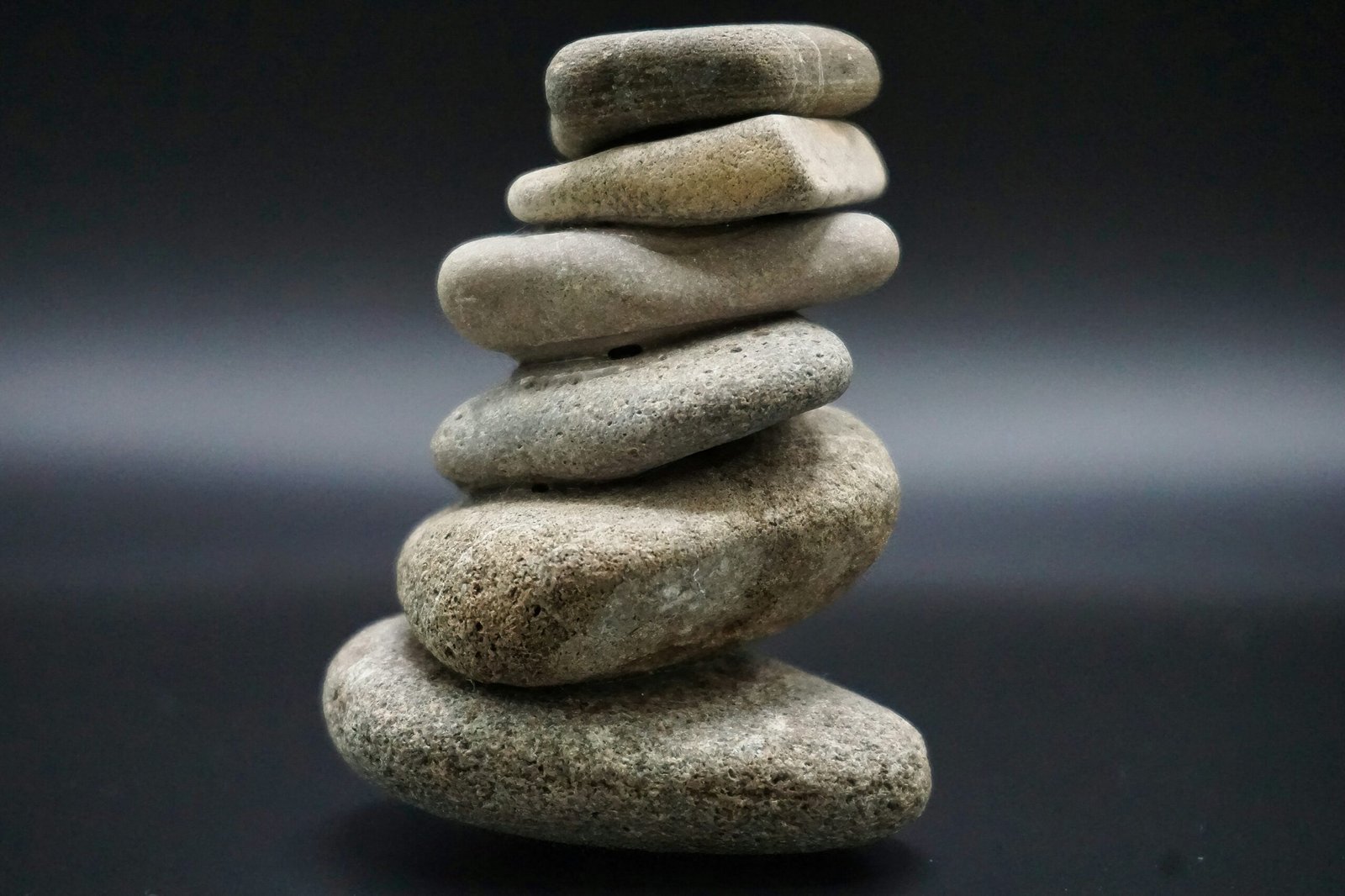Introduction to Tranquil Massage Rooms
A tranquil massage room serves as the cornerstone for achieving a serene and peaceful environment indispensable for effective massage therapy. The ambiance of the room plays a pivotal role in fostering relaxation and well-being for both the client and the therapist. By creating a calm and soothing setting, the massage experience is significantly enhanced, allowing for deeper relaxation and more effective therapeutic outcomes.
For clients, entering a tranquil massage room can immediately alleviate feelings of stress and anxiety. The serene atmosphere fosters a sense of calm, making it easier for clients to unwind and fully engage in the therapeutic process. This is particularly important as mental relaxation is often a precursor to physical relaxation. A well-designed massage room can therefore amplify the benefits of the therapy, aiding in the release of muscle tension, promoting better circulation, and enhancing overall health and well-being.
Therapists also benefit greatly from working in a tranquil environment. A peaceful setting allows them to focus entirely on their techniques and the needs of their clients, free from external distractions. The calming ambiance can contribute to a more mindful practice, enabling therapists to deliver more precise and effective treatments. Additionally, working in a serene space can reduce the physical and emotional strain on therapists, promoting their own well-being and job satisfaction.
The importance of a tranquil massage room extends beyond immediate relaxation. It sets the stage for a holistic therapeutic experience where both client and therapist are attuned to the process, thereby maximizing the benefits of the session. From the moment one steps into the room, the tranquil environment serves as a sanctuary, facilitating a seamless transition from the hustle and bustle of daily life into a state of profound peace and relaxation.
Choosing the Right Location
Selecting the appropriate location for a massage room is crucial in cultivating a tranquil and relaxing environment. The first factor to consider is quietness. A serene atmosphere is essential for both the client and the therapist to ensure a distraction-free experience. Avoid areas near high-traffic zones, such as busy streets or noisy common areas within a building. Instead, opt for a space that is naturally insulated from external sounds, which can significantly enhance the overall ambiance.
Accessibility is another pivotal factor. The massage room should be easily reachable for clients, particularly those with mobility issues. Ensure that the location is clearly marked and that there are no obstacles hindering access. Additionally, consider the proximity to complementary facilities, such as restrooms or changing areas, to offer a seamless experience for clients.
The overall ambiance of the space plays a vital role in the client’s relaxation and comfort. The room should be spacious enough to accommodate the massage table and allow the therapist to move freely around it. Natural light can be beneficial, but it should be controllable to maintain a soothing atmosphere. Consider the use of soft lighting options, such as dimmable lights or candles, to create a calming effect.
Privacy is paramount in a massage room setting. The chosen location should ensure that clients feel secure and undisturbed. This can be achieved by using soundproofing materials and ensuring that the room is not adjacent to areas with heavy foot traffic. The sense of privacy contributes significantly to the client’s ability to relax and fully engage in the therapeutic experience.
In conclusion, the right location for a massage room can greatly influence the effectiveness of the treatment by promoting a peaceful and private environment. By prioritizing quietness, accessibility, and ambiance, you can create a space where clients feel truly at ease and can fully reap the benefits of their massage session.
Optimal Lighting for Relaxation
Lighting plays a crucial role in establishing a tranquil massage room setting. The right lighting can significantly enhance the relaxation experience, creating an inviting and calming atmosphere for clients. A well-thought-out lighting strategy can transform a mundane room into a serene sanctuary.
Natural light is one of the most effective ways to create a soothing environment. If possible, incorporate windows that allow sunlight to filter into the room. Natural light has a calming effect and helps maintain a connection with the outdoors, which can be very relaxing for clients. Utilize light, sheer curtains to diffuse the sunlight, preventing it from becoming too harsh while still allowing the benefits of natural illumination.
In addition to natural light, soft ambient lighting is essential. Consider using dimmable LED lights, which allow you to adjust the brightness according to the client’s preference and the time of day. Warm, soft white lights are generally more soothing than cool, harsh lights. Wall sconces and floor lamps with fabric shades can also help diffuse light, adding to the tranquil ambiance.
Candles can further enhance the relaxation experience by providing a gentle, flickering light that is both soothing and visually appealing. Scented candles, such as lavender or chamomile, can also contribute to the overall sensory experience, promoting relaxation through aromatherapy. However, it’s important to ensure that the scent is not overpowering and that the candles are placed safely to avoid any hazards.
Avoiding harsh lighting is essential in creating a relaxing environment. Harsh overhead lights or stark fluorescent bulbs can be jarring and counterproductive to the aim of relaxation. Instead, aim for layers of lighting that can be adjusted to create a soft, enveloping glow. Using dimmers and different light sources allows for customization, ensuring that the lighting complements the tranquil massage room setting.
By carefully considering and implementing these lighting strategies, you can significantly enhance the overall relaxation and tranquility of a massage room, providing a serene space for clients to unwind and rejuvenate.
Soundscapes and Music
Sound plays a pivotal role in establishing the ambiance of a massage room. The right auditory environment can significantly enhance the overall experience, promoting relaxation and tranquility. Calming music, nature sounds, and white noise machines are essential elements in blocking out external disturbances and creating a serene atmosphere.
Calming music is often the cornerstone of a tranquil massage setting. Gentle instrumental melodies, classical compositions, or soft ambient tracks can help clients unwind and relax. It’s important to select music that is unobtrusive and maintains a steady pace, avoiding sudden changes in tempo or volume that could disrupt the soothing environment.
Nature sounds, such as flowing water, rustling leaves, or birdsong, can also contribute to a calming soundscape. These sounds have a grounding effect, connecting clients with the natural world and promoting a sense of peace and relaxation. Nature sounds can be used alone or mixed with calming music to create a more immersive auditory experience.
White noise machines are another valuable tool for maintaining a tranquil massage room setting. These machines generate a consistent sound that masks external noises, such as traffic or conversations from adjacent rooms. By providing a steady auditory backdrop, white noise machines help to keep the massage environment free from disruptions, allowing clients to fully relax.
Creating a playlist that enhances relaxation requires careful consideration of the auditory elements. It’s advisable to curate a mix of calming music and nature sounds, ensuring that each track flows seamlessly into the next. The playlist should be long enough to cover the entire duration of a massage session, preventing any breaks in the soothing soundscape.
Incorporating these sound elements into a massage room setting can significantly elevate the client’s experience, fostering a deeper sense of relaxation and tranquility. By paying attention to the auditory environment, practitioners can create a holistic and serene space that enhances the therapeutic benefits of a massage.
Aromatherapy and Scent
A crucial element in creating a tranquil massage room setting is the strategic use of aromatherapy. The benefits of essential oils extend beyond their pleasing fragrances; they can significantly enhance relaxation and well-being. Various essential oils, each with unique properties, can be diffused to create a serene atmosphere. For example, lavender is renowned for its calming effects, reducing stress and promoting sleep. Similarly, eucalyptus oil can help clear the mind and invigorate the senses, while chamomile is excellent for soothing anxiety and promoting relaxation.
To effectively introduce these scents into the massage room, there are several methods available. Oil diffusers are a popular choice due to their ability to disperse aromatic oils evenly throughout the room. Ultrasonic diffusers, in particular, use water to emit a fine mist, ensuring the scent lingers without being overpowering. Alternatively, scented candles can serve a dual purpose by providing both aroma and a gentle, ambient light. When selecting candles, it is essential to choose those made from natural ingredients to avoid the release of potentially harmful chemicals.
Choosing the right scents to promote calmness is paramount. It’s advisable to avoid overpowering fragrances that might cause discomfort or distraction. Blending oils can also create a personalized scent profile that caters to specific needs. For instance, a combination of lavender and bergamot can enhance a relaxing environment, while a mix of sandalwood and cedarwood can provide grounding and balance. Understanding the preferences and sensitivities of clients will aid in selecting the most appropriate scents for the massage room.
Incorporating aromatherapy into your massage room setting not only elevates the sensory experience but also contributes to a holistic approach to relaxation and healing. By carefully selecting and diffusing essential oils, you can transform a simple space into a sanctuary of tranquility and well-being.
Comfortable and Inviting Furnishings
Creating a tranquil massage room setting begins with the careful selection of comfortable and inviting furnishings. The choice of furniture is pivotal in establishing an atmosphere conducive to relaxation and rejuvenation. At the heart of the room lies the massage table, which should be both sturdy and cushioned to provide support and comfort for clients. Opt for a table with adjustable height to cater to different body types and therapist preferences, ensuring optimal ergonomics during the massage session.
Chairs within the massage room also play a significant role in enhancing the overall experience. Consider adding a few plush chairs or a comfortable loveseat for clients to sit and relax before and after their session. These seating options should feature soft upholstery and adequate support to encourage a sense of ease and comfort. Additionally, a small stool or a therapist chair can be useful to accommodate the therapist’s needs during the massage.
Soft linens, pillows, and blankets are essential components that contribute to a cozy and inviting space. High-quality, breathable linens help to create a luxurious feel and ensure that clients remain comfortable throughout their visit. Choose linens in calming, neutral tones to promote a serene environment. Providing an assortment of pillows, from firm to soft, allows clients to customize their comfort level. Similarly, having a variety of blankets ensures that clients can remain warm and comfortable during their massage, especially in a cooler room.
Incorporating these thoughtful furnishings and accessories not only enhances the physical comfort of the massage room but also contributes to the overall ambiance. A well-designed space with comfortable and inviting furnishings can significantly elevate the massage experience, fostering a sense of tranquility and well-being for every client.
Decor and Aesthetic Choices
Creating a tranquil massage room setting begins with thoughtful decor and aesthetic choices that promote peace and relaxation. The primary element to consider is the color scheme. Opt for soothing, neutral tones such as soft blues, greens, and earthy browns. These colors are known for their calming effects and ability to create a serene atmosphere. Avoid bright, stimulating colors that can increase alertness and detract from the peaceful environment.
Artwork is another crucial aspect. Select pieces that evoke tranquility and nature, such as landscapes or abstract designs with fluid, gentle lines. The artwork should complement the color scheme and not overpower the space. The goal is to create a cohesive visual experience that supports relaxation.
Incorporating plants into your massage room can significantly enhance the tranquil ambiance. Plants not only add a touch of nature but also improve air quality and create a sense of calm. Choose low-maintenance plants like succulents, snake plants, or peace lilies, which thrive in indoor environments and require minimal care.
Decorative elements such as candles, essential oil diffusers, and soft textiles can further enhance the serene setting. Scented candles or diffusers with calming scents like lavender or eucalyptus can help clients unwind and prepare for their massage. Soft, plush towels and blankets add to the comfort and relaxation, making the space feel more inviting.
Minimalism plays a vital role in maintaining a tranquil massage room. Reducing visual clutter by limiting the number of decorative items can create a more open and peaceful environment. Keep surfaces clear and organized, and choose furniture with clean lines and simple designs. This approach helps to focus the mind and reduce stress, contributing to the overall sense of tranquility.
By carefully selecting decor and aesthetic elements, you can create a massage room that not only looks serene but also feels like a peaceful retreat, providing an ideal setting for relaxation and rejuvenation.
Maintaining a Clean and Organized Space
Creating a tranquil massage room setting hinges significantly on maintaining a clean and organized space. Cleanliness and organization are fundamental in fostering a serene and calming environment, which is essential for both the client’s relaxation and the practitioner’s efficiency. A clean environment not only reflects professionalism but also enhances the overall feeling of calmness and well-being.
To achieve and maintain this tranquility, it is crucial to implement a regular cleaning schedule. Daily cleaning tasks should include wiping down surfaces, changing linens, and emptying trash bins. Weekly tasks might involve more thorough cleaning, such as vacuuming carpets, mopping floors, and sanitizing tools and equipment. Establishing a checklist can ensure that no task is overlooked, keeping the space consistently clean and inviting.
Organized storage solutions are equally important. Utilize shelves, cabinets, and baskets to store supplies neatly. Labeling containers can help in quickly locating items, thus reducing clutter and maintaining order. Ensure that frequently used items are easily accessible while less frequently used items are stored away, allowing for a tidy and efficient workspace. Decluttering practices should be an ongoing effort, involving regular assessments to remove any unnecessary or outdated items from the room.
A clutter-free and clean massage room not only looks appealing but also contributes to a more relaxing experience for the client. The absence of clutter reduces distractions, allowing clients to fully immerse themselves in the relaxing atmosphere. Additionally, a well-organized space enables the practitioner to perform tasks more efficiently, thereby enhancing the overall service quality.
In summary, maintaining a clean and organized massage room is paramount in creating a tranquil setting. By adhering to regular cleaning schedules, utilizing effective storage solutions, and practicing consistent decluttering, practitioners can ensure that their space remains a sanctuary of calm and relaxation for their clients.





